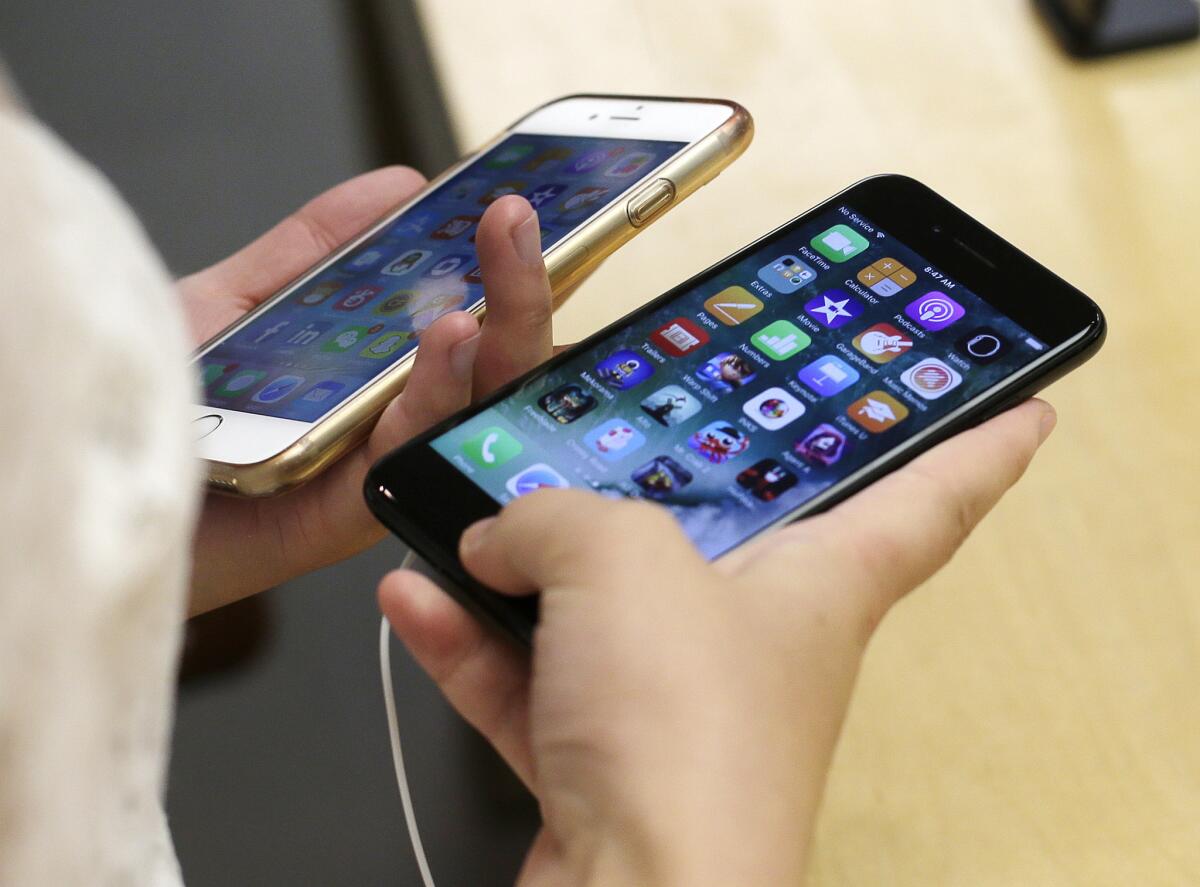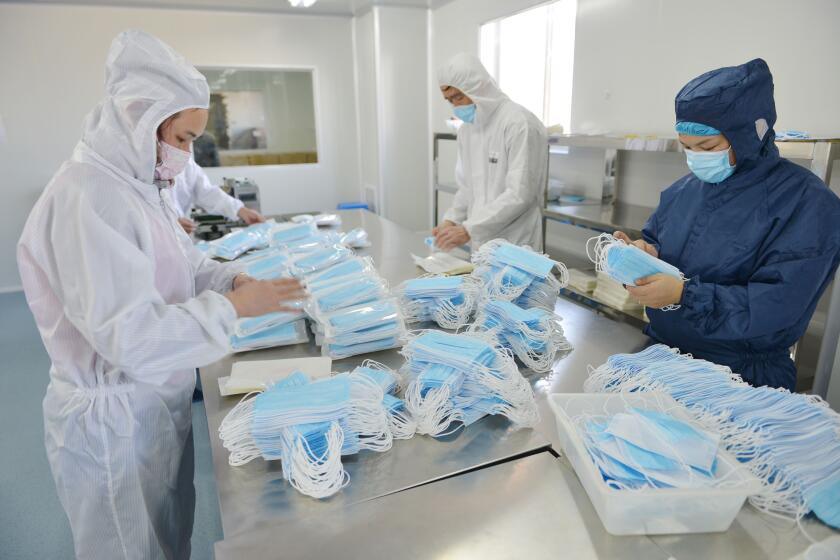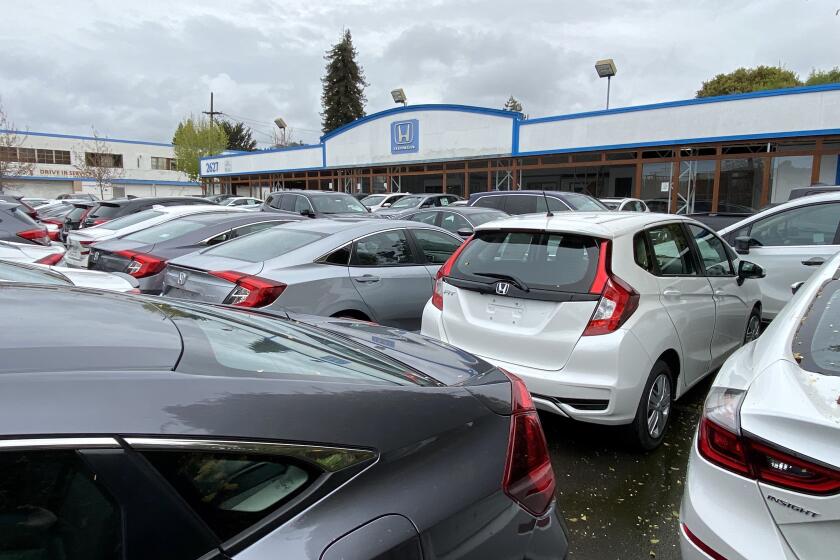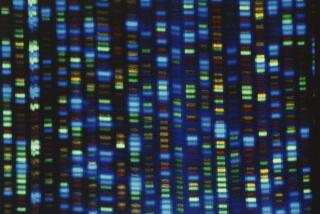Apple and Google plan technology to allow COVID-19 contact-tracing using phones

- Share via
Apple Inc. and Google unveiled a rare partnership to add technology to their smartphone platforms that will alert users if they have come into contact with a person with COVID-19. People must opt in to the system, but it has the potential to monitor about a third of the world’s population.
The technology, known as contact tracing, is designed to curb the spread of the novel coronavirus by telling users they should quarantine or isolate themselves after contact with an infected individual.
The Silicon Valley rivals said Friday that they are building the technology into their iOS and Android operating systems in two steps. In mid-May, the companies will add the ability for iPhones and Android phones to wirelessly exchange anonymous information via apps run by public health authorities. The companies will also release frameworks for public health apps to manage the functionality.
This means that if users test positive for COVID-19 and add that information to their public health app, users with whom they came into close proximity over the previous several days will be notified of their contact. This period could be 14 days, but health agencies can set the time range.
Chinese companies producing faulty testing kits and masks are marring Beijing’s attempts to assert leadership in the fight against the coronavirus.
The second step takes longer. In the coming months, both companies will add the technology directly into their operating systems so this contact-tracing software works without having to download an app. Users must opt in, but this approach means many more people can be included. Apple’s iOS and Google’s Android have about 3 billion users between them, more than a third of the world’s population.
The pandemic has killed more than 100,000 and infected 1.62 million people. Governments have ordered millions of people to stay home, sending the global economy into a vicious tailspin. Pressure is building to relax these measures and get the world back to work. Contact tracing is a key part of this because it can help authorities contain a potential resurgence of the virus as people resume regular activities.
Still, this technology is controversial because it involves sharing sensitive health information from billions of people via mobile devices that are constantly broadcasting their location. Apple and Google stressed on Friday that their system preserves users’ privacy. Consent is required and location data are not collected. The technology also won’t tell users whom they came into contact with, or where that happened. The companies said they can’t see the data either and noted that the whole system can be shut down when needed.
Such a close partnership between these longtime rivals is extremely rare. The technology giants have competed in smartphone operating systems, app stores, media services and voice-recognition technology for years — while trading barbs over the privacy of each other’s platforms. However, both companies have been under pressure to use their prodigious resources to help fight the pandemic.
Showrooms are closed, but many car dealers sell online, with delivery to your door.
“All of us at Apple and Google believe there has never been a more important moment to work together to solve one of the world’s most pressing problems,” the companies said in a joint statement.
Their system uses Bluetooth, a standard way for most mobile devices to communicate with one another. Apple and Google shared a theoretical example to explain how it works.
Two people meet to chat for a few minutes, and in the background via Bluetooth their smartphones exchange anonymous identifiers to register that they have been in contact. These digital keys change every 15 minutes or so and remain on these people’s devices to preserve privacy.
Several days later, one of these individuals is diagnosed with COVID-19. The person enters the results into a health agency app on their phone. The system then asks for this user’s consent. If consent is granted, the person’s smartphone sends a record of the other mobile devices that have been in close proximity during the previous days. This information is temporarily stored in a remote computer server for about 14 days.
Meanwhile, the other person’s phone checks the server periodically to see if any identifier keys have been associated with a positive COVID-19 diagnosis. The phone downloads all positive keys and matches it anonymously to the key belonging to the individual from the meeting days earlier. This sends a notification to the other person’s phone with information from health agencies about how to quarantine or self-isolate.
The contact-tracing technology isn’t the first step against COVID-19 for either company. Google launched an information website in March, and Verily, a unit of Google parent Alphabet Inc., is running virus-testing sites in some parts of California. Apple has released its own screening tools for iPhone users. It has also donated more than 20 million masks to healthcare workers and has designed face shields.
Other organizations are also working on contact tracing. Researchers at MIT earlier this week announced plans for a similar system. Some countries and third-party developers have also tried implementing contact tracing on phones, but they have faced privacy and connectivity issues that the new system is designed to avoid.
More to Read
Inside the business of entertainment
The Wide Shot brings you news, analysis and insights on everything from streaming wars to production — and what it all means for the future.
You may occasionally receive promotional content from the Los Angeles Times.












